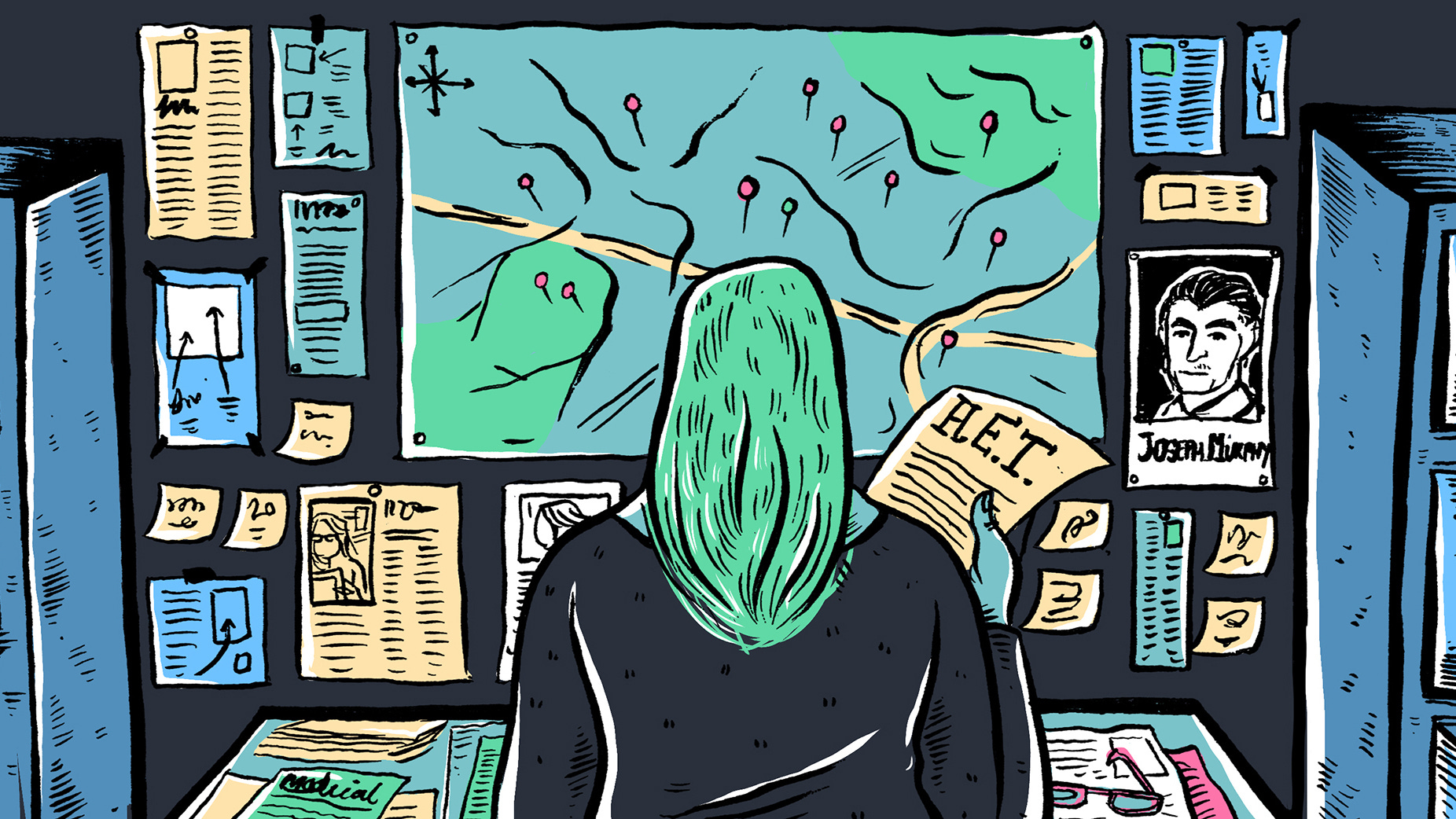Decades After Northern Ireland’s “Troubles,” Families of the Dead are Still Seeking Answers—and Taking the Investigations Into Their Own Hands
Janet Donnelly’s unarmed father was shot point-blank by a British solider. She spent 20 years unraveling the Army's cover-up.

Illustrations by Fiona McDonnell
The first bullet pierced Joseph Murphy’s leg and exited the other side as he was running across the grass, away from the gunfire. On the aerial map of a field in Belfast, Northern Ireland, which hangs in her office, Janet Donnelly, Murphy’s daughter, can pinpoint the exact location where it happened in August 1971: A red pin, marking the spot where he was shot, then cried out to his friend, “Dessie, I’m hit!” and fell. Dessie’s location is marked nearby, a green pin. Green is for survivors.
The second bullet entered Murphy’s open wound as he was lying in the army barracks, where the British soldiers brought him, along with the rest of the injured. One soldier stood over him and cocked a gun at his bleeding leg. He fired. This time, the bullet lodged.
Donnelly can point to the barracks, or any other place on the map, and recount what happened there as if she was an eyewitness.
The death of Murphy and ten other civilians during August 9-11, 1971, would becom…

